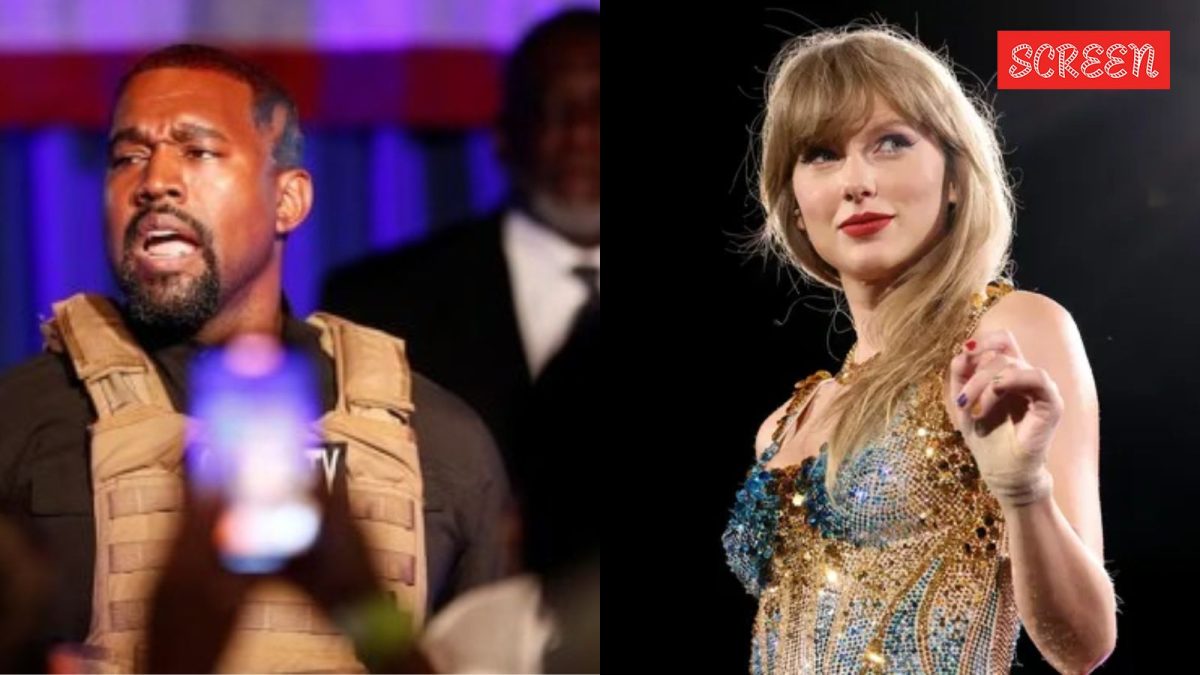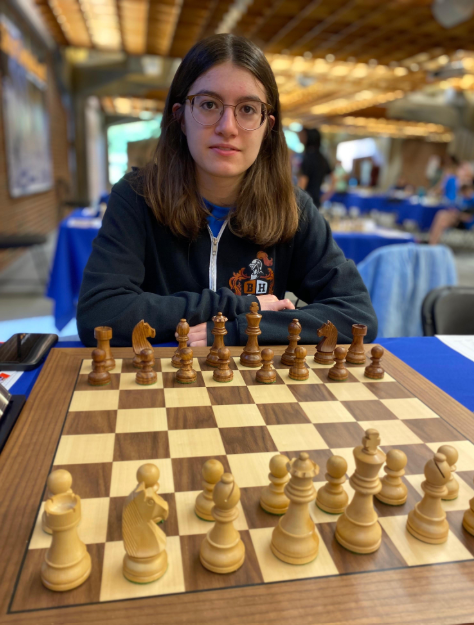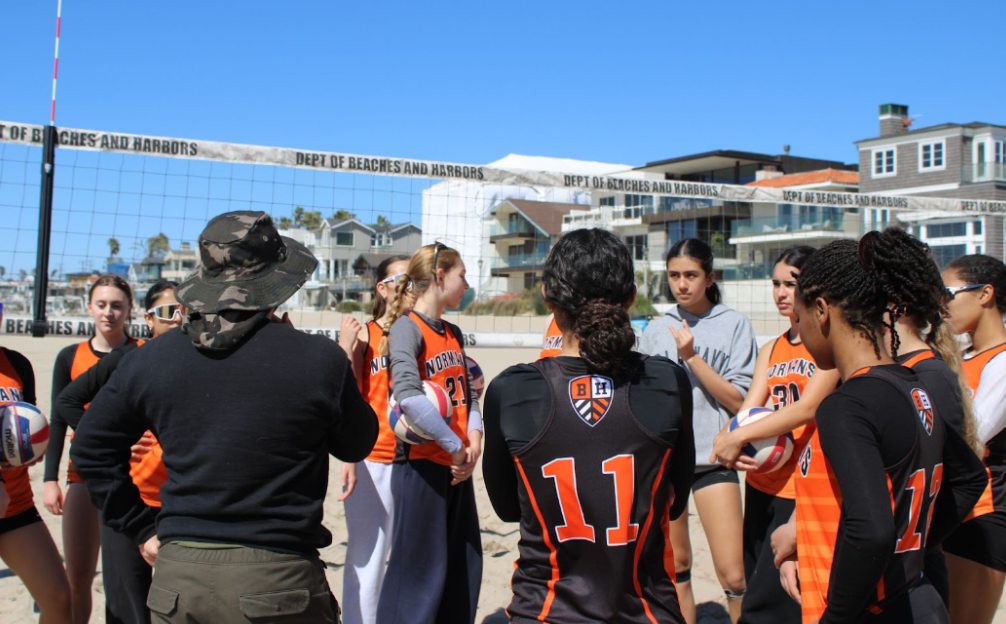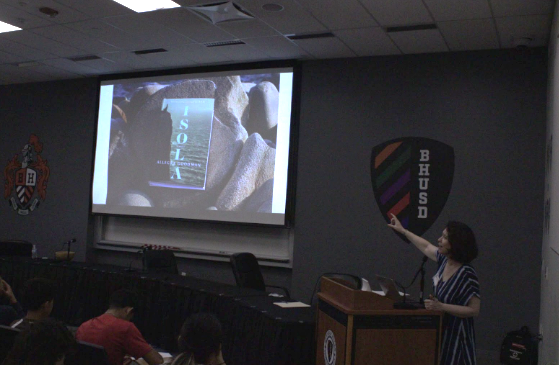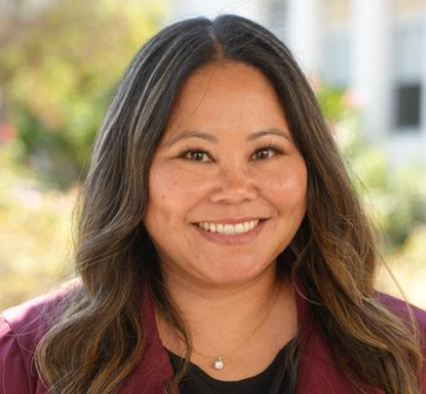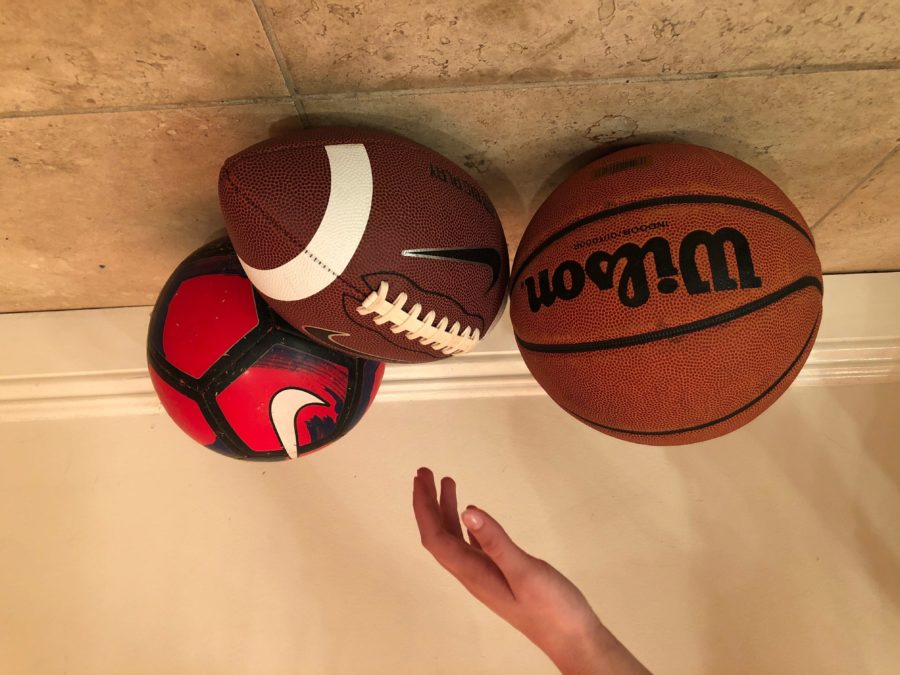Sophia Goldberg sports editor
Jamie Kim co-editor-in-chief
For the 28th year in a row, nation-wide high school sport participation has increased, reaching an all-time high of 7,963,535 student athletes for the 2016-17 school year.
Beverly has its fair share of athletes, with nearly 850 participants, 22 different sports programs and 44 sports teams. And as all things go, the athletics program would not be possible without the proper funding and financial support.
Beverly must meet the criteria outlined in two legislations: Title IX of the 1972 Education Amendments to the Civil Rights Act, which states that women and men must have equal opportunities and treatment in “any educational program or activity receiving federal financial assistance,” and Free and Appropriate Education, which states that no public school can discriminate against students on a number of factors, including the ability to pay.
According to administration and others involved in the athletics program, Beverly’s process of funding sports teams complies with these two doctrines and does well in ensuring equal treatment for all teams and their athletes.
Funding for athletic teams follows a specific protocol for getting approved and received. While the school does have a section outlined in its annual budget for sports in general, it does not allocate a set amount for each sport at the beginning of the year.
“I don’t know that necessarily going and saying you have a set amount for each team, because what if they need less? People tell us what they need, and we get it for them,” House B Assistant Principal Chris Regan, whose duties include evaluating and supervising athletics, said.
Instead, each sport receives funding on a per-need basis.
“It is probably the most efficient way because each team can request based on their own individual needs. Each team needs to let us know what their needs and requirements are in order to then fund those needs,” Regan said.
Teams request funds for equipment, uniforms or other expenses, and money is pulled from set partitions from the Beverly Hills Alumni Athletic Association (BHAAA), ASB, PTSA or student donations.
“There are a variety of different funding sources we can use. There are multiple pots of money that athletics teams can request money from. ASB pays for entry fees, referees and buses. There’s another fund that pays for specific equipment,” Regan said. “It’s not necessarily a budgeted amount of money per year.

For example, uniforms can be either funded through student donations, and each player can then keep the uniform at the end of the season, or through BHAAA, which donates money to teams every three or four years to purchase new varsity uniforms.
Due to this individual process, the budget, which Highlights requested but was not be provided at the time of writing, easily changes.
“It’s not necessarily a budgeted amount of money per year. We have a budget that says we have x amount of money to spend on athletics fees. I am not aware if we ever reached that budgeted amount, but a budget is a fluid document and can be changed any time,” Regan said.
The district also has a source of money for athletic teams to use for maintenance and repair of their facilities: the courts and fields used for practices and games. For example, Regan explained, maintenance for the softball field would require additional money because it’s part of a regular maintenance of the school. Additionally, the Swim Gym, which acts as a PE classroom and a sports facility, is just another part of the custodial staff’s daily rotation to clean and monitor.
ASB advisor Jennifer Goolsby explains the process by which ASB approves funding requests, mainly by ensuring funds can be pulled from team accounts and forms are filled out correctly.
“Coaches talk with [Athletic Director] Mr. Brown and write check requests. Mr. Brown then takes the forms to the Student Store,” Goolsby said. “ ASB makes sure the forms match, but we see it after it has been approved by a bookkeeper and an assistant principal. We then approve the request and send it back to the assistant principal and Student Store.”
Athletic Director Kevin Brown does not see any discrepancy between funding and equipment for sports teams. BHAAA purchases uniforms approximately every four years for every team after request from coaches. ASB and PTSA fund new equipment and tournament fees.
So far, the largest expenditure is tournament fees and officials, and Brown claims these fees are distributed evenly among all teams.
“One thing I do as Athletic Director is help schedule home games. It offsets the transportation costs, but you do need to pay the officials. I’d say our cost for officials is up there as far as an expense this year,” Brown said. “Also, most of our sports schedule tournaments. As a matter of fact, many of them of are out of the county. Generally speaking, every team spends roughly the same.”
Brown does see a difference in the amount of support teams receive from their peers, but that is due to the success of those teams and the spirit surrounding those teams.
“I think it’s simply boys basketball has been highly successful, and therefore has created more school spirit and kids want to go to the games,” Brown said. “I think the issue is how we create more school spirit and more support for our other teams.”
Brown believes a “buddy system,” in which different teams partner up and support one another, is one step in increasing school spirit and peer support for all athletes.
“Teams can decide who they are going to support as a buddy system. If each team took a sport and decided to support each other, you’d probably see an increase in school spirit,” Brown said.
Regan echoed Brown’s thoughts, believing that different sports supporting one another is a way to build strong rapport within the athletics program.
“Encouraging other teams to go watch other sports is definitely a way to encourage that unity among sports. I know that at the wrestling tournament a couple weeks ago, the soccer coach cut practice early so the kids could go watch the wrestling tournament. When the football practices were done, often times, the kids would go watch the water polo games,” Regan said.
However, Regan acknowledged that it is often difficult for students to go watch sports games due to hectic schedules and school workloads.
“I think that our students are so busy in general that it’s hard for them to go watch sporting events. They’ve got five to six classes, three APs, a job outside of school, so you know, for some of them, it’s very difficult to stay and watch and support,” Regan said.
The proposals brought forth by Brown and Regan may be a step in building bridges that a few student athletes deem broken.
Girls JV basketball player Lauren Samidi believes that there is a noticeable difference in treatment between the girls and boys basketball programs.
“The girls basketball program has experienced so many situations where the guys get priority over practice courts, games, tournaments. Girls aren’t as prioritized as the boys, which makes us feel like our game isn’t as hype to watch, when that’s just not true,” Samidi said.
Samidi believes that the schedule of the games leads to difference in priority for the girls and boys.

“One major reason girls are under prioritized is because the girls games are always scheduled before the guys so the guys play at 8 p.m. or 9 p.m., later times, where more students are available to come watch. Whereas the girls play at an early time, like let’s say 6 p.m., and no one shows up to those games,” Samidi said.
Samidi also added that other factors have made her rethink the support the girls team receives.
“Guys are always the first to get the Swim Gym for practice, [I think] they have the opportunity to travel for their tournaments and they receive more funds and support from alumni and families. I just don’t think that fair; it pushes me to think: do they actually care? If we all quit tomorrow, would there even be a difference in our school’s basketball program?” Samidi said.
However, other student athletes do not feel there is a discrepancy in support between girls and boys teams of the same sport.
“Currently I do not see this as a pressing issue in our high school community. Different sports teams attract different crowds of people and past history sets an example of school wide attendance that varies for different sports teams,” boys water polo captain and ASB Head Row Vice President Ryan Abrishami said.
Abrishami added that, instead, the focus should be on increasing school-wide interest and spirit for all sports teams. He says that currently, he sees no imbalance between the sports teams, like football and basketball, who get the cheer team and band at their games, and the teams who don’t.
“I don’t think the way the system is set up is unfair, especially in terms of cheer and band. But I think there should definitely be ways to build more recognition for these programs, like pep rallies organized by ASB,” Abrishami said.
Boys soccer captain Finn Sklarew believes that both girls and boys soccer teams are treated equally, as both often have to fundraise to get their own equipment.
“I believe that there isn’t enough support for either of the [soccer] teams. We are both trying hard this year to gain more support from our classmates. For the boys soccer program, we are trying to promote our soccer games and sell fan gear to attract more fans,” Sklarew said. “Hopefully, our program will win more games this year and gain support from everyone around the school.”
Girls soccer captain Camilla Wolff, however, believes that there aren’t any differences within each sport, but across different sports.
“I really don’t see any discrepancies in our sports programs. I mean obviously some sports get more support than others, but I don’t think there’s an issue there between sports of different genders,” Wolff said. “The discrepancies in our athletics don’t seem different than at any other school.”
Categories:
In attempt to ensure equality among all sports programs, athletic funding, support come through team-specific needs
December 19, 2017
1
Donate to Highlights
$125
$1000
Contributed
Our Goal
Your donation will support the student journalists of Beverly Hills High School. Your contribution will allow us to purchase equipment and cover our annual website hosting costs.
More to Discover





